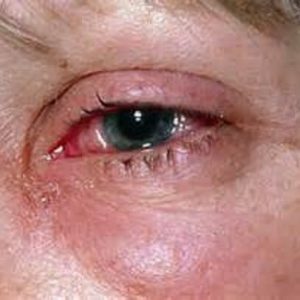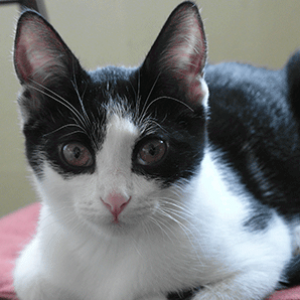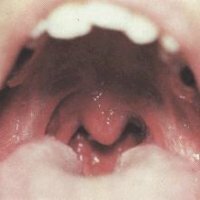What can you get from a cat to a person
 Cat is one of the most common pets.The small size of this animal, unpretentiousness, interesting and funny behavior, affection and appearance make many people want to keep a cat in an apartment or a private house.
Cat is one of the most common pets.The small size of this animal, unpretentiousness, interesting and funny behavior, affection and appearance make many people want to keep a cat in an apartment or a private house.
According to many, a cat can calm a person's psyche, relieve nervous tension, eliminate stress.Special relationships in cats are with children.A small kitten plays his child's attention with his games.Communication with him teaches the child understanding the need for caring for the animal, feeding, nursing.For children living in the city, the cat of the house is the first experience of communication with the world of nature.
However, rarely one of us thinks that a cat can carry a threat - to be the source of some diseases.Our task is to understand whether there is a risk of infection from this animal with any diseases, and how to minimize it.
Table of contents:Diseases transmitted from cats
Pathologies transmitted from communication with a cat can be conditionally divided into groups:
- viral;
- bacterial;
- are parasitic;
- caused by pathogenic fungi.
Note: most often the source of the disease can be a cat that has free access to the street and is in contact with other animals.
The most common and dangerous diseases that can be infected by a person from a cat are:
- rabies;
- toxoplasmosis;
- salmonellosis;
- tuberculosis;
- tularemia;
- pasteurellosis;
- dermatomycosis;
- Aujeszky's disease;
- helminthic invasions.
Can a person get rabies from a cat
 This disease is classified as deadly, so it should be feared even with the slightest suspicion of the possibility of development.Other names of rabies are hydrophobia, hydrophobia, rabies, lyssa, etc.
This disease is classified as deadly, so it should be feared even with the slightest suspicion of the possibility of development.Other names of rabies are hydrophobia, hydrophobia, rabies, lyssa, etc.
The causative agent penetrates into the bloodstream when the patient is bitten by a sick cat.A person becomes infected in a small percentage of cases, since he is less susceptible to rabies than animals, but the danger of development persists.The causative agent quickly penetrates into the central nervous system and causes clinical manifestations of inflammation of the brain tissue - encephalitis.There are severe headaches, mental disorders, seizures of hydrophobia with marked spasm of muscles involved in breathing.Cure rabies is impossible, the outcome of this disease is fatal.
For this reason, when bitten or scratched by a cat,( especially when attacking a wild animal), it is necessary to introduce mandatory anti-rabies serum.It is important to do this in the first 72 hours after possible infection.Then the serum will be useless.The cat that caused the damage, it is desirable to catch and give for observation in the quarantine veterinary service.A pet should always be planted.
Is it possible to catch a person from a cat with toxoplasmosis
The pathogen causative agent is toxoplasm.This disease a person can catch from a cat when ingested into the gastrointestinal tract of the oocyst, the causative agent of toxoplasmosis, surrounded by a thick capsule.People become infected by contact with animals and with soil, disseminated by feline secretions and contained in them by oocysts.Statistics state that up to 30% of the world's population suffers from this disease, the majority - in asymptomatic form.Toxoplasma causes a general allergic organism.
Important : if a pregnant woman becomes infected with toxoplasmosis, then it is very likely that a child may die, miscarriage or stillbirth.
The disease is manifested by severe fever, severe intoxication, a significant increase in the size of the spleen, liver.Often there is brain damage - encephalitis.Throughout the body, lymph nodes increase.Complaints on eye ailments are very common.Toxoplasmosis can occur in both acute and chronic forms, periodically recur.It requires special diagnosis and treatment.
Salmonellosis
This simple organism, which causes a specific inflammation of the intestinal tract, the cat can excrete with urine, feces, saliva, mucus in the nose.If the rules of hygiene are not observed, contact-alimentary( via ingestion into the mouth) occurs the way of infection - with food, water, through dirty hands.
Note: cats are mainly carriers of salmonella, the clinical manifestations are quite rare.But a person becomes a victim of this dangerous microbe much more often.
Salmonellosis can be very severe.The main form of disease prevention is careful personal hygiene and proper product handling.It should be remembered - if the cat is climbing on kitchen utensils and has access to products - the likelihood of salmonellosis is very high.
How a person is infected from a cat with tuberculosis
 This infectious disease is rare in cats, but due to its special severity and duration of treatment, one should be on the alert.A person from a cat can get tuberculosis through a contact and household way.Most often - from the hands, which hit the pathogen - tuberculin rod.In rare cases, possible aerogenic infection, it comes with an open form of the disease in a cat.
This infectious disease is rare in cats, but due to its special severity and duration of treatment, one should be on the alert.A person from a cat can get tuberculosis through a contact and household way.Most often - from the hands, which hit the pathogen - tuberculin rod.In rare cases, possible aerogenic infection, it comes with an open form of the disease in a cat.
Important: if you notice that the pet has recently lost weight, has become sluggish, does not eat well - contact the veterinarian as soon as possible to establish the cause of this condition.If a pathogen is found, the cat must be treated.And people - carefully monitor yourself.
Tularemia
Pathogen is a coccoid microbe.The disease is acute.In humans, there is a sudden and is accompanied by severe intoxication with fever, inflammation of lymphoid formations and the development of inflammatory-necrotic changes in various organs.Infection occurs through the intestine, most often through the skin and mucous eyes, sometimes through the respiratory tract.
From the entrance gate infection spreads throughout the body.Clinical manifestations depend on the form and can be similar to pulmonary tuberculosis, angina and other diseases.The outcome of the disease is relatively favorable.The disease mainly appears in natural foci.Therefore, for its prevention, it is necessary to isolate the cat in time with clinical manifestations, carefully observe the rules of personal hygiene and cleaning the room.
Pasteurellosis
 Pasteurellosis is another pathology that can be infected by a person from a cat.This is a rare disease, its causative agent is a stick that can cause a strong fever with intoxication in the person, inflammatory processes on the skin and in the cellulose, damage to the joints and bone tissue.
Pasteurellosis is another pathology that can be infected by a person from a cat.This is a rare disease, its causative agent is a stick that can cause a strong fever with intoxication in the person, inflammatory processes on the skin and in the cellulose, damage to the joints and bone tissue.
A microorganism causing a pathology is transmitted to a person with a cat bite.Rarely, through the mucous membranes.The disease itself is determined on the basis of the study of pathological separable and ulcer, puncture of buboes.Serological reactions and skin-allergic tests are used to help the doctor.Pasteurellosis is successfully treated with antibiotics.
Dermatomycosis
From a cat, a person can become infected with a causative agent of dermatomycosis - ringworm.This fungal infection in the form of round, ring-shaped spots that cause itching, hair loss.The disease can be transmitted by contact from cats and sick people.
Treatment of animals and humans is carried out with special antifungal ointments.The room where the sick animal lives should be treated with hypochlorite-bleach.After recovery, you need to monitor the skin condition, because the disease can return.
Aujeszky's disease
A rare form of pathology, the causative agent of which is the herpetic virus.Cats are infected with this disease when catching and eating rodents.It manifests itself in animals with symptoms of damage to the nervous system( paralysis, convulsions).The skin becomes edematous and itchs badly.Beasts behave aggressively, they have discoordination movements.Most of them die.Contact infection.
The person has cases of fever and itching of the skin.
Glaive invasion
Not all helminths that live in a cat can infect a person.And not all parasites that are able to "settle" with a person are transferred to him from a cat.But there are worms with which this pet can still "reward" its master.
Such diseases include:
-
 Dipylidiosis , which is caused by a cucumber chain, a type of tapeworm class.He lives in the small intestine, causing digestion and anemia.His treatment is quite long.And the pathogens fall in case of accidental ingestion of the coat of an infected cat or withers found on the wool.
Dipylidiosis , which is caused by a cucumber chain, a type of tapeworm class.He lives in the small intestine, causing digestion and anemia.His treatment is quite long.And the pathogens fall in case of accidental ingestion of the coat of an infected cat or withers found on the wool. - Toxocarosis. The causative agent is a round worm, a person causes fever, broncho-pulmonary manifestations, changes in blood-eosinophilia.Toksokara eggs are swallowed by a person, getting to him by contacting the hands with the feces of the animal , and then in the mouth.
About pseudo-diseases, which allegedly can get a person from a cat
Important : in the network, there are many articles that testify about the feline diseases transmitted to people.But often these articles contain a lot of mistakes and false information of .
For example, some authors are considered to be a list of diseases transmitted from cat to person, pink lichen( Zhibera). But it is a pathology of an allergic nature, and it occurs as a result of violations of immune reactions.The presumable cause of the disease is the virus.Confirmation of its transfer from animals to people( and vice versa) is not available.
Can not in principle be transferred from a cat to a person eczema , since this is a highly allergic disease that has nothing to do with infectious causes.The same can be said about the red planar lice , which has autoimmune causes.
 Some authors contrive to accuse a cat even of transmitting psoriasis to people.We rush you to calm - it's impossible.
Some authors contrive to accuse a cat even of transmitting psoriasis to people.We rush you to calm - it's impossible.
Infect from a cat opisthorchiasis - one of the types of hepatic trematodes also impossible.A cat, like a human, is the ultimate master of this parasite.And infection occurs when eating poorly processed fish, which contains the larvae of the pathogen.
You can not get from a cat with diphyllobothriasis - a disease that causes the appearance of flat helminths, whose larvae also enter and develop only in fish.
It is incorrect to attribute to a cat the possibility of infecting a person with with alveococcosis. Indeed, the parasite that causes this disease is related to echinococcus.It is, in fact, transmitted by cats, but still it is not the same thing.
General rules to prevent human infection from a cat
We have prepared several recommendations that will be helpful to everyone who holds a pet:
- If you have a cat at home, do not forget to wash your hands often,Especially - before cooking and eating, at night.
- Do not let the cat sleep in your bed, it should have its place.
- Clean the apartment as often as possible.
- Limit your animal's contact with others, especially wild ones.
- At the slightest sign of malaise, show the cat to the vet.
- Carry out periodic deworming to the animal and family members.
- Do not allow your domestic cat to hunt birds and mice.
By observing these simple rules you will protect yourself from possible diseases.
Alexander Lotin, medical reviewer



